Every year, around 627,000 new firms are established, and around 30,000 new items are introduced into the consumer market. However, almost 95% of the products fail within their first year. According to a report by CB Insights, 42% of all companies fail due to misreading market expectations.
This is why market research and developing a go-to-market plan are critical to a successful product launch. It can help you save time and costs on failed product launches, provide a positive customer experience, and establish steps to ensure a successful product launch.
Now that you understand the importance of crafting a successful GTM strategy let’s show you how to craft one for a successful launch!
How to Create a Go-To-Market Strategy That Works?
Developing a go-to-market strategy is as critical for established businesses as for start-ups. The process involves getting a thorough grasp of the target market, your rivals, and the proposed product's position within it.
With a greater understanding of clients and market conditions, your organization will have more tools to prosper in all areas of business, from product launches to delivering a new brand identity globally.
Furthermore, a GTM plan combines several other tactics and frameworks to ensure that a product enters the market with the best possibility of success. Here are three main frameworks that will help you create the ‘perfect’ GTM strategy and have a successful launch:
Frameworks to Craft a GTM Strategy for Startups
Product Development Cycle
A product development strategy establishes the direction for new products or the steps to modify existing ones. This covers marketing strategies, finance, goals & objectives, and market penetration techniques.
This strategy aims to gain a competitive advantage by positioning products in the best possible way to succeed within the market.
Framework to use:
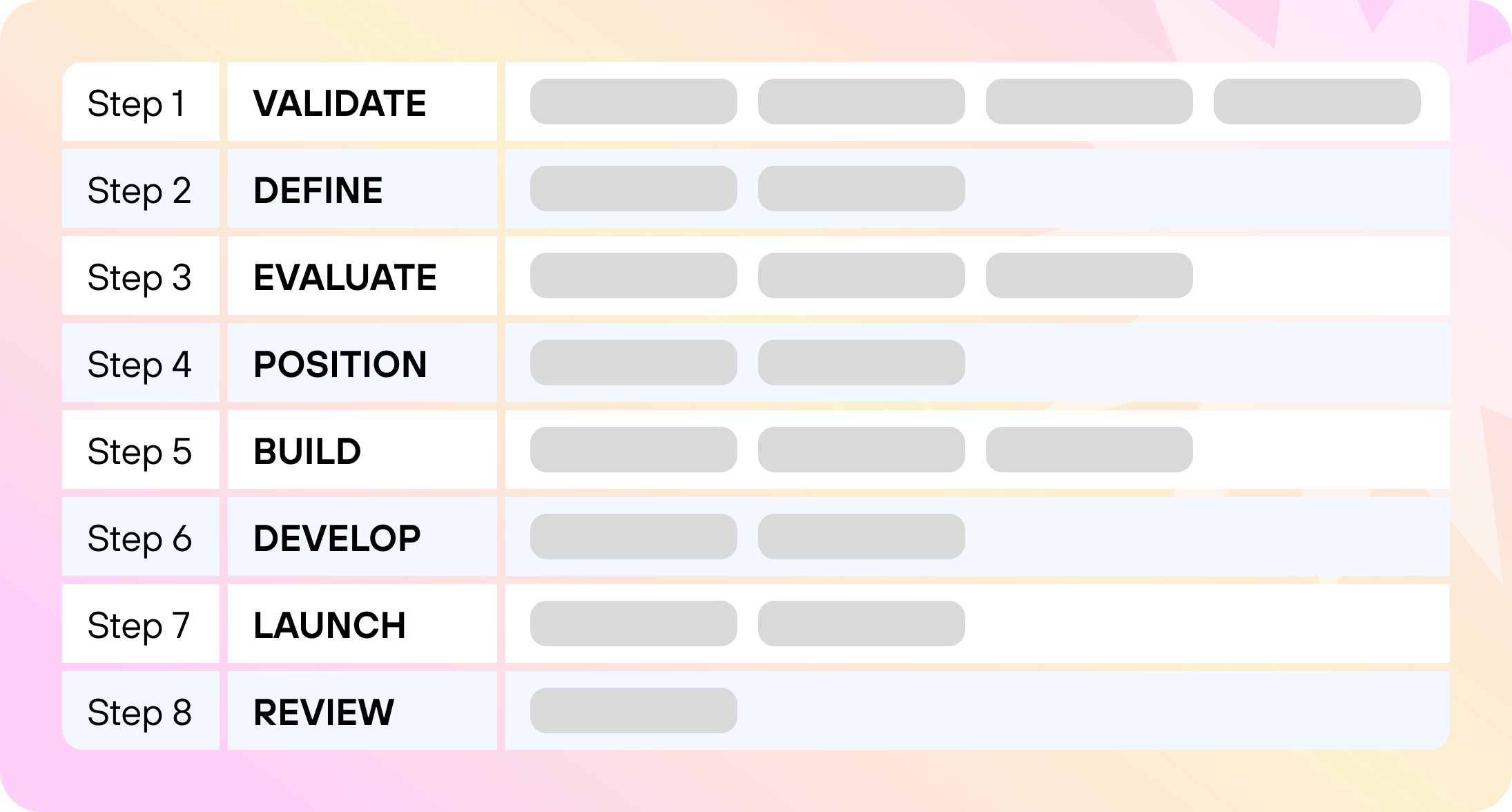
How to use it:
Step 1: To validate your product, conduct extensive market research for your target audience, and find beta testers from niche community groups.
Step 2: Prepare a report based on your research and the feedback you received from your initial testers.
Step 3: Document the problems your target market is facing and the features that your product has to offer to solve those problems.
Step 4: Clearly define how your product will be positioned in the market and highlight the unique features that set your product apart from competitors.
Step 5: Implement an agile process to build the product based on the defined features and specifications such as break-even point and product profitability.
Step 6: Develop the product with scalability and budget in mind to accommodate future growth.
Step 7: Develop a comprehensive marketing strategy, including online and offline channels. You can also make a checklist as a reference for your entire team.
Step 8: Gather and analyze customer feedback to make improvements. Then, use those insights to iterate on the product, marketing, and sales strategies for continuous improvement.
Why do you need this framework: A product development cycle framework serves as a structured guide, ensuring that each phase, from ideation to implementation, is meticulously planned and executed.
This framework provides a systematic approach, allowing teams to seamlessly validate, define, evaluate, position, and build components.
Best for: It’s ideal when you are developing a complex product with intricate features. This helps ensure that all components are well-designed, tested, and integrated seamlessly.
Competitor Analysis
Competitor analysis is the compass guiding businesses through the intricacies of the market landscape. It enables companies to distinguish themselves effectively by thoroughly examining competitors and identifying their strengths, weaknesses, and market positioning.
It is a roadmap to navigate market dynamics, helping businesses recognize their unique strengths and uncover opportunities to outshine rivals.
Framework to use:
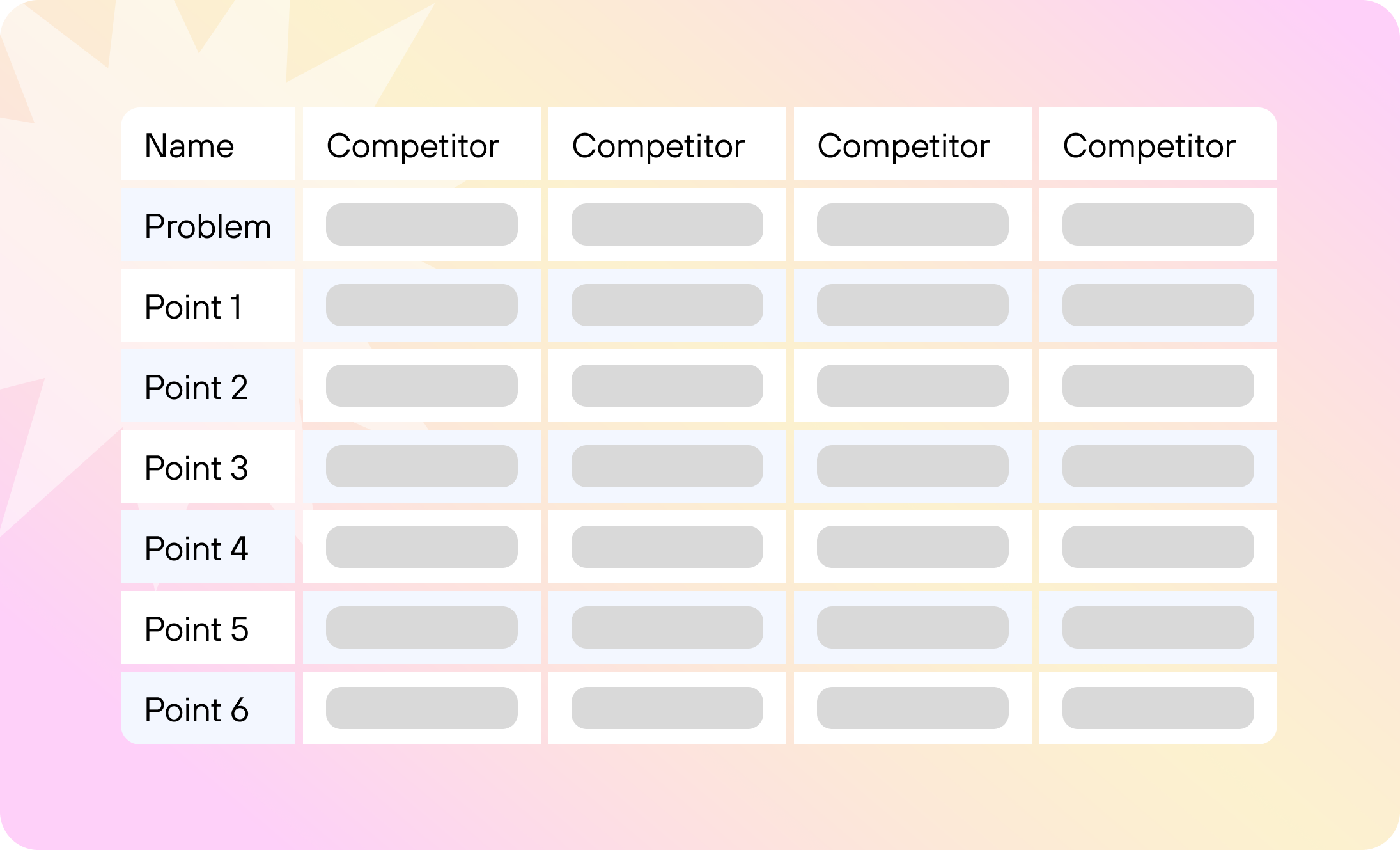
How to use it:
Step 1: List down your competitors in your industry, including both established players and emerging startups.
Step 2: Research each competitor's background, history, and market presence. This will help you understand their product offerings, including features, pricing, and packaging.
Step 3: Identify their strengths, weaknesses, opportunities, and threats (SWOT analysis).
Step 4: Determine the strategic implications for your startup based on the analysis. Essentially, identify areas where your product can differentiate and excel.
Why do you need this framework:
Competitor analysis is essential for gaining a strategic advantage in a competitive market. By understanding the strengths and weaknesses of rivals, businesses can make informed decisions, refine their offerings, and identify opportunities to outperform competitors.
This framework acts as a vital tool in navigating the complex landscape of market dynamics, ensuring that companies stay ahead by anticipating and responding effectively to competitor actions.
Best for:
{{resource}}
Develop Value Proposition
A value proposition is your elevator pitch for why someone should choose your product over another. It is the first thing someone notices about your product. Therefore, it must make a good first impression.
In simple terms, a value propositioning strategy helps you to differentiate yourself from the competition and describe your worth.
Frameworks to use:
1. Identify the Product USP

How to use it:
Step 1: Concisely state the key essence of your product's value proposition, capturing its unique appeal for potential customers. Craft a hero message suitable for quick understanding.
Step 2: Describe your product or service with a simple functional overview. Answer the question "What do you sell?" without focusing on benefits or marketing messages.
Step 3: Identify your target clients by answering "Who buys this?" or "Who uses it?" Create separate maps for different customer segments, avoiding the combination of multiple targets.
Step 4: Map the customer journey using the Jobs to Be Done (JTBD) theory format "When + I want to + So I can." Detail the transition from the customer's current problematic situation to the desired one.
Step 5: Identify competitors, including analogous products and solutions enabling customers to move from a problematic situation to a desired one.
Step 6: Integrate product features, facts, and figures supporting differentiation from competitors; address customer pains, deliver gains, and overcome solution barriers.
2. Identify Pains & Gains
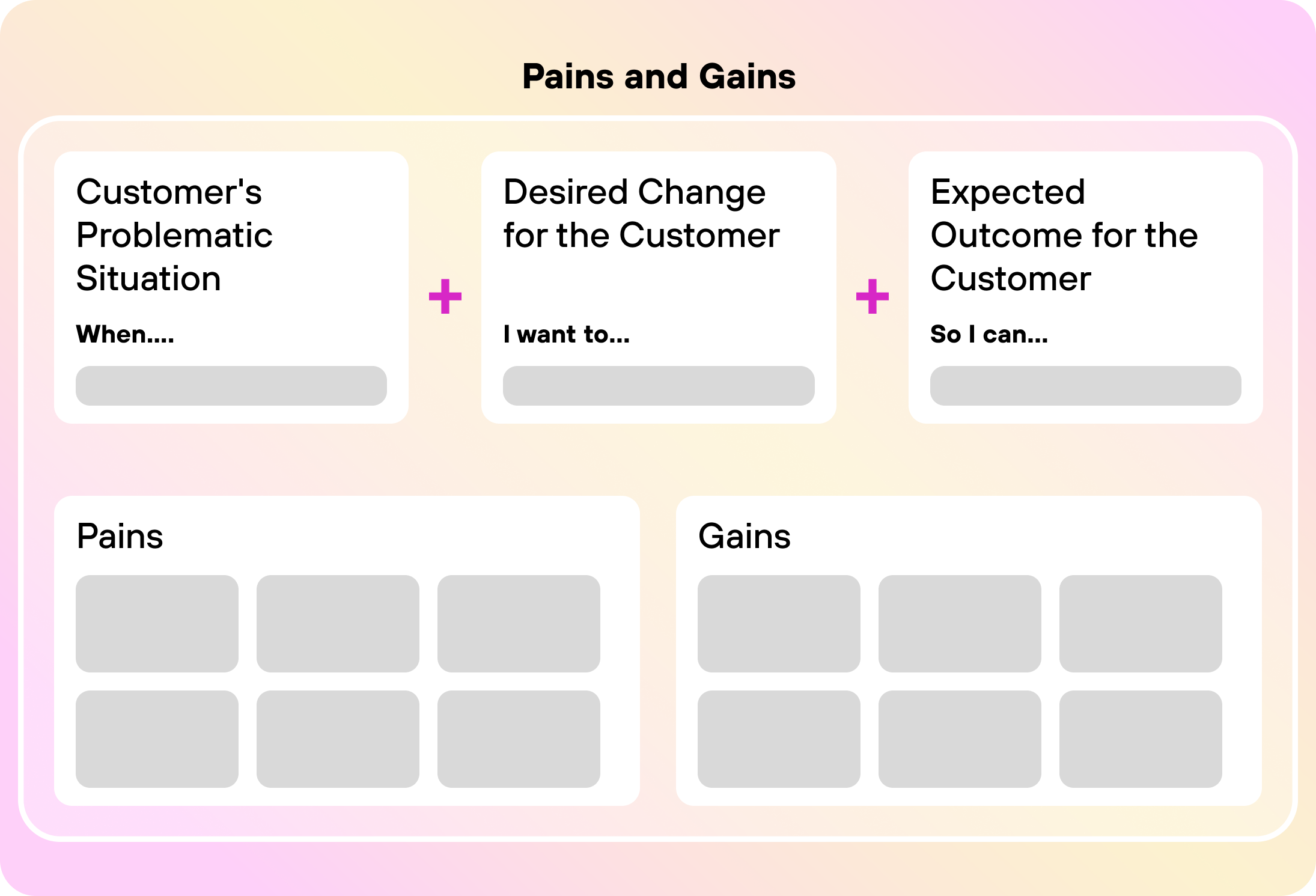
How to use it:
Step 1: On the left side, list negative consequences and risks from the customer journey's problematic situation, focusing on the "when" aspect.
Step 2: On the right side, outline positive outcomes customers seek when transitioning to the desired situation, corresponding to the "so I can."
Step 3: Determine critical problems your product solves and the essential benefits it provides. Align product properties/functions to address identified pains or provide gains.
Step 4: Prioritize those offering higher value to the customer and highlight relevant product features.
3. Identify the Solutions & Barriers
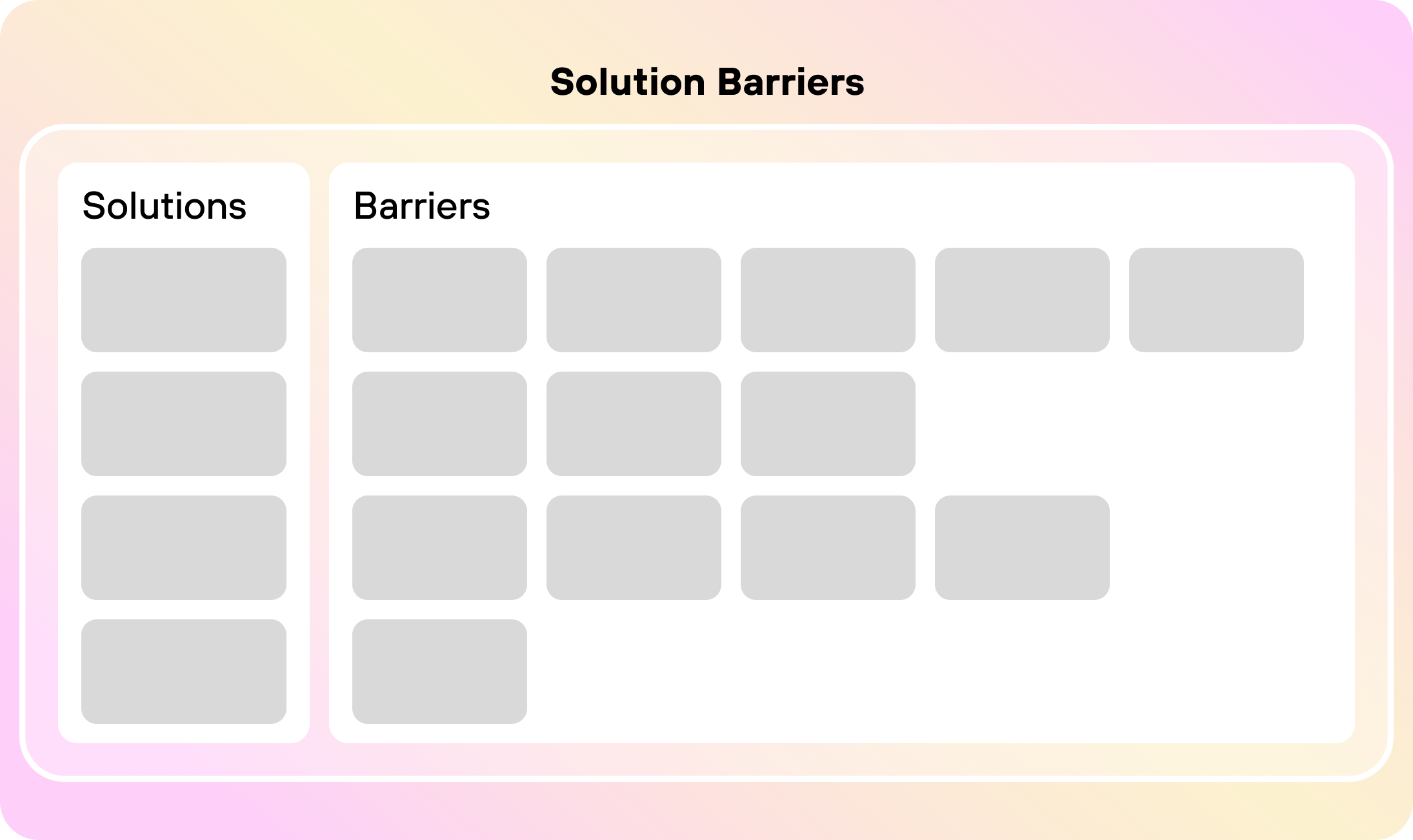
How to use it:
Step 1: On the left side, list solutions or groups of solutions, including competitors and customer behavior patterns, aiding the transition from the current problematic situation to the desired one.
Step 2: On the right side, identify barriers corresponding to each solution, recognizing obstacles, difficulties, or risks that might exist in the customer's mind.
Step 3: Prioritize these barriers to understand their significance in the decision-making process.
Step 4: Determine how your product, with its attributes and features, can overcome these barriers.
Step 5: Emphasize barriers as people often choose solutions with fewer problems, aligning with the loss aversion theory.
4. Finalize messaging
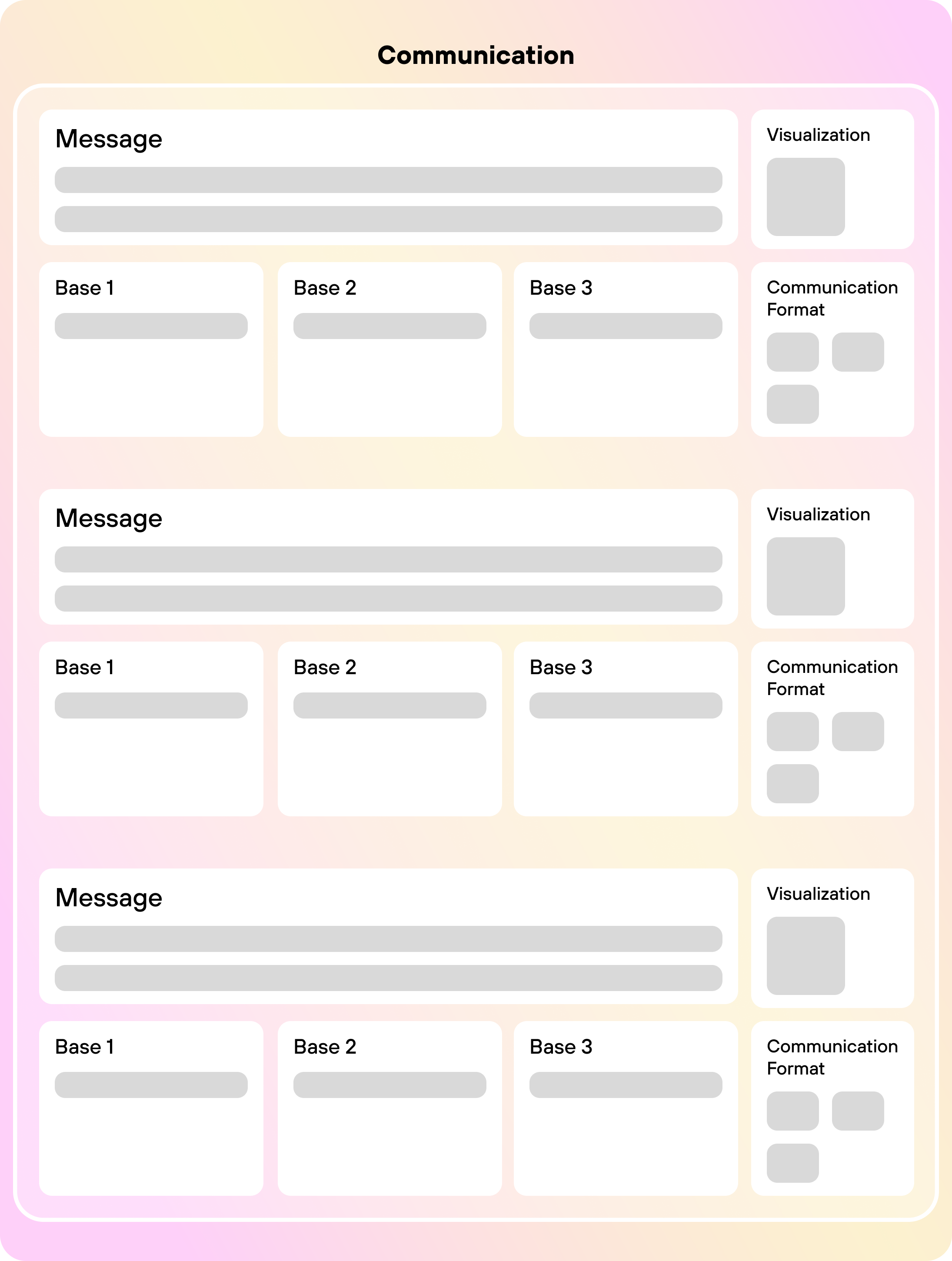
How to use it:
Step 1: Use insights from the previous frameworks to craft messages explaining the nature, causes, and implications of the customer's problem or pain. For example, use the solutions framework to illustrate how your product overcomes barriers related to competing solutions and itself.
Step 3: Support your claims with evidence or reasoning, establishing the "bases" for each message derived from the templates.
4. Decide on the specific approach or format for conveying these messages to the audience effectively.
5. Compile these messages into a 3–5-page Communication document, ensuring a comprehensive reflection of the product's value proposition based on the templates' insights.
Why do you need these frameworks: By using these frameworks you can easily identify and articulate key benefits, and differentiators. So, it'll be easier for you to align internal teams on the core value proposition and guide marketing efforts, ensuring a consistent and persuasive messaging that resonates with the audience.
Best for: When numerous alternatives of your product exist, a strong, unique value proposition helps your startup stand out and attract customers.
Align Products With Market Opportunities
Aligning products with market opportunities requires a keen understanding of the evolving demands and trends within the market. You need to ensure that your product seamlessly integrates with what the market needs to capitalize on emerging opportunities.
Framework to use:

How to use it:
Step 1: Access the Market-Product Risk Profile Tool to visually map out the intersections of your product capabilities and potential markets.
Step 2: Place each new product or feature idea into the corresponding intersection on the tool. Be specific about whether it's a new product for existing customers (B), a feature for an existing product in a new market (G), or any other combination. Avoid placing one idea in multiple intersections.
Step 3: Understand the risk associated with each intersection. Recognize that sections A, B, and D are safer, while F, H, and J involve higher risk.
Step 4: If an idea falls into section J (the riskiest), acknowledge the presence of many unknowns. This awareness is crucial for strategic planning.
Step 5: Evaluate the risk-reward ratio for each idea and refine and prioritize the idea accordingly.
Step 6: For ideas in safer sections (A, B, D), develop actionable strategies for market entry or product enhancement. For riskier sections, outline how you will navigate uncertainties.
Step 7: Based on the risk assessment and idea refinement, finalize your GTM plan. Outline the marketing, sales, and operational strategies required for successful product-market alignment.
Why do you need this framework: The framework ensures that your offerings directly address customer demands. Also, it helps startups focus their efforts on delivering solutions that resonate with their target audience, increasing the chances of success.
Best for: Aligning products with market opportunities is particularly effective when operating in industries characterized by rapid changes and diverse consumer preferences. It is most beneficial for businesses seeking to meet current market demands and proactively position themselves ahead of the curve, ensuring sustained relevance in the face of evolving trends.
Quantify the Degree of Each Need Satisfaction
Possessing a comprehensive set of desired outcomes and job statements allows companies to gain quantitative insights into their market, turning the unknown into the knowable. Therefore, quantification of the degree to which each outcome is over/underserved becomes a priority.
By using importance and satisfaction data, an opportunity algorithm calculates scores, establishing the priority order of these outcomes. Moreover, this framework enables customers to evaluate the importance and satisfaction of up to 150 outcome statements, a substantial advancement compared to outdated practices.
Also, the emphasis on data-driven insights counters the common practice of relying on qualitative proxies, which introduces significant risk and unpredictability to the innovation process.
Framework to use:
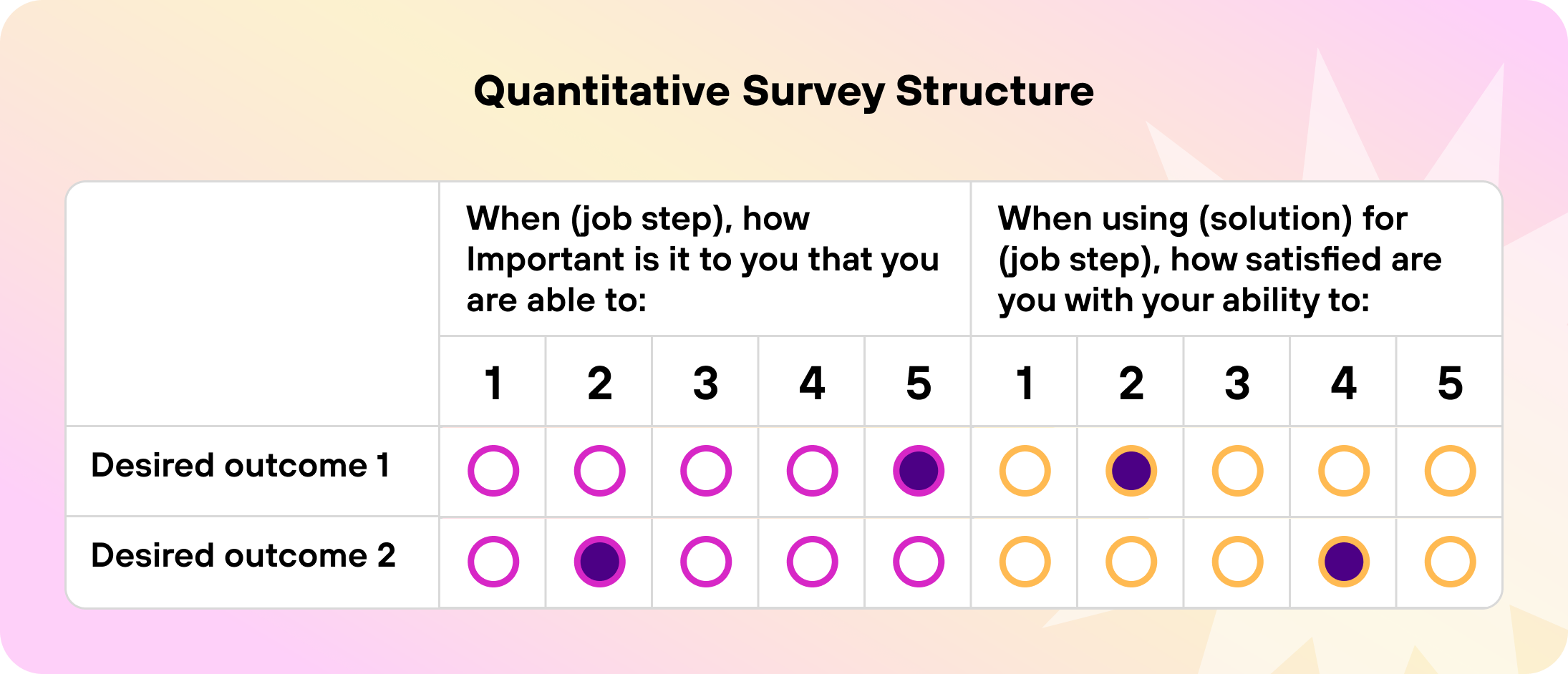
How to use it:
Step 1: Use the outcome-driven innovation processes to comprehensively identify and define all customer needs, creating a set of desired outcomes and job statements.
Step 2: Determine needs that are important but not adequately satisfied by existing solutions. This identifies opportunities to improve and innovate.
Step 3: Recognize needs that are unimportant to customers but are highly satisfied by existing solutions. This reveals areas where cost-effectiveness can be enhanced.
Step 4: Develop quantitative metrics based on importance and satisfaction data for each outcome. Prioritize opportunities by calculating an opportunity score for each need.
Step 5: Assess how competing solutions perform in satisfying customer outcomes.
Why do you need this framework: The framework is essential for startups as it provides a systematic and data-driven approach to understanding customer needs, prioritizing opportunities, and creating innovative solutions. Moreover, it minimizes the risk of relying on speculative data and ensures informed decision-making.
Best for: It's ideal when you have a game-changing solution to a known problem. The framework enables a thorough understanding of customer needs, helping prioritize improvements and innovations in alignment with market demands.
{{cta}}
Mistakes Startups Make When Building a GTM Strategy
A well-planned GTM strategy will assist you in launching your digital product to the right audience at the right time, and with meaningful messaging. However, no one is perfect, and businesses frequently make blunders when crafting a GTM strategy.
However, you don’t have to be one of them! Here are three mistakes that most startups make, that you shouldn’t:
(The below points are for an infographic)
- Assuming that customers inherently understand the problem a startup's product or service is solving.
- Overlooking the necessity of establishing the problem in the minds of their potential customers.
- Neglecting market diversity & crafting a one-size-fits-all strategy that fails to cater to the diverse nature of their audience.
- Treating GTM as an afterthought until the product is 100% ready. When GTM planning should begin early in the product development phase
When You Don’t Need a GTM Strategy?
Another mistake that a lot of businesses make is that they don’t differentiate between a marketing strategy and a GTM strategy — and you’ll be surprised by how common this confusion is.
While, on the surface level they might come across as the same thing, a GTM strategy, marketing strategy, and marketing plan differ on various levels.
A marketing plan is a long-term strategy (sometimes spanning many years) that describes a company's overall marketing objectives. A marketing strategy, on the other hand, is an action plan outlining the concrete activities required to launch a marketing campaign. Whereas, a GTM strategy is a strategic overview of the concrete processes and considerations required to bring a new product to market.
This means that different situations require different approaches! To help you get a better idea, here are some situations where you don’t need a GTM strategy:
- Selling services: If your business primarily provides services, you may not need a comprehensive GTM strategy. Instead, a well-defined marketing plan might suffice to attract and retain clients.
- Limited resources: Startups or small businesses with constrained resources should opt for focused marketing efforts rather than an extensive GTM strategy.
- Highly niche products: In cases where your product serves an extremely niche market with a well-defined customer base, an elaborate GTM strategy may be overkill. So, you can concentrate on direct marketing efforts instead.
That was all about when you don’t need to employ a GTM strategy. Now, let’s talk about the situations where you need a GTM strategy:
- Launching a new product in an existing market: When introducing a new product in a market with existing demand, a GTM strategy helps you stand out, position your product effectively, and address customer needs.
- Bringing an existing product to a new market: Expanding into a new market requires a well-thought GTM strategy. You must adapt your product to meet local needs, consider cultural differences, and tailor your marketing approach to the new audience.
- Testing a new product in a new market: If you're venturing into uncharted territory with a brand-new product in a new market, a GTM strategy becomes your guiding light. It ensures you understand the dynamics of the market, the specific needs of customers, and how to position your innovation successfully.
Conclusion
Without a proper plan or go-to-market strategy, you will struggle to communicate the value of your product or service to your audience. But as a startup, you cannot afford to spend months researching and planning. That's an expensive and deadly mistake.
What you need the most is speed, an anti-fragile team which shines in difficult situations, and data to make your decisions. Here's how you can do that:
If you feel lost, just book a call with one of our experts. We provide free strategies, without forcing you to buy from us. All you need to do is give us enough information about the position you're in, your goals and the problems you're facing. There's no hidden cost. You're free to walk away with the strategy.






















3